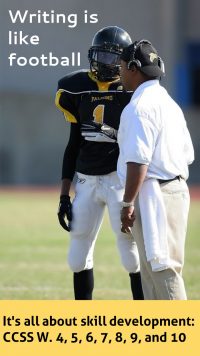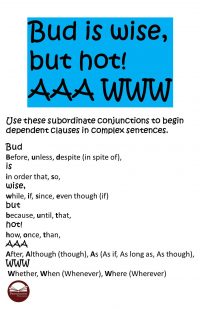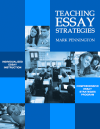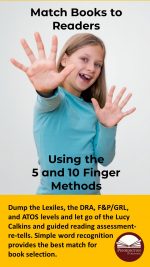How to Evaluate Spelling Programs
Properly evaluating spelling programs can save future headaches and money. One good guideline is to check whether spelling (encoding) is part of the screening and placement assessment for any reading intervention program. I take a look at the two most popular reading intervention programs with this in mind at Comparing READ 180 and Language! Live. Adopting spelling programs that teachers will not use simply makes no sense. With increasing attention on following Response to Intervention (RTI) guidelines, it makes sense to follow the criteria that orthographic research has established for quality spelling programs. Much of the following summarizes research study conclusions from the What Works Clearinghouse.
- A BAD SPELLING PROGRAM uses “themed” spelling word lists, grouping words by such themes as animals, months, or colors. A GOOD SPELLING PROGRAM uses developmental spelling patterns for its word lists, providing sequential, research-based orthographic instruction.
- A BAD SPELLING PROGRAM uses practice worksheets that focus on rote memorization, such as word searches, fill-in-the-blanks, or crossword puzzles. A GOOD SPELLING PROGRAM provides spelling sorts/word parts worksheets to help students practice recognition and application of the spelling patterns.
- A BAD SPELLING PROGRAM de-emphasizes structural analysis. A GOOD SPELLING PROGRAM emphasizes word study: syllables, accents, morphemes, inflections, spelling rules, pronunciation, and derivational influences.
- A BAD SPELLING PROGRAM does not integrate vocabulary instruction. A GOOD SPELLING PROGRAM integrates homonyms, common Greek and Latin prefixes, roots, and suffixes, and other linguistic influences.
- A BAD SPELLING PROGRAM minimizes the reading-spelling connection. A GOOD SPELLING PROGRAM reinforces the decoding-encoding connection with an instructional scope and sequence aligned with systematic phonics instruction. The A GOOD SPELLING PROGRAM program includes five years of seamless spelling instruction (Levels A, B, C, D, E)—perfect for grade-level classes, combination classes, and flexible homeschool instruction.
- A BAD SPELLING PROGRAM ignores spelling irregularities. A GOOD SPELLING PROGRAM includes “rule-breakers” throughout the program, providing problem-solving strategies that build student (and teacher) confidence in the English orthographic spelling system.
- A BAD SPELLING PROGRAM uses spelling tests solely as summative assessments. A GOOD SPELLING PROGRAM uses spelling tests as diagnostic and formative instruments to help teachers differentiate instruction. Recording matrices enable teachers to keep track of mastered and un-mastered spelling patterns for each student—simple record-keeping and minimal paperwork.
- A BAD SPELLING PROGRAM provides one-size fits all instruction. A GOOD SPELLING PROGRAM provides the resources for true differentiated instruction from remedial to grade-level to accelerated spellers.
- A BAD SPELLING PROGRAM uses visual-only spelling strategies. A GOOD SPELLING PROGRAM uses multi-sensory instructional practice, including songs, raps, games and phonological awareness activities—perfect for students with auditory processing deficits and a “must” for effective Response to Intervention (RTI) instruction.
- A BAD SPELLING PROGRAM has no writing-spelling connection. A GOOD SPELLING PROGRAM requires students to develop weekly Personal Spelling Lists that include commonly misspelled words from their own writing.
- A BAD SPELLING PROGRAM provides no review activities for unit spelling tests. A GOOD SPELLING PROGRAM provides ample review activities, including Word Jumbles for each sound-spelling pattern, web-based songs and raps, and entertaining games.
- A BAD SPELLING PROGRAM takes either inordinate teacher preparation or require too much class time. A GOOD SPELLING PROGRAM is “teacher-friendly” and requires only minimal prep time. These flexible resources will not eat up instructional minutes.
A Model Grades 3-8 Spelling Scope and Sequence
Preview the Grades 3-8 Spelling Scope and Sequence tied to the author’s comprehensive grades 3-8 Language Strand programs. The instructional scope and sequence includes grammar, usage, mechanics, spelling, and vocabulary. Teachers and district personnel are authorized to print and share this planning tool, with proper credit and/or citation. Why reinvent the wheel? Also check out my articles on Grammar Scope and Sequence, Mechanics Scope and Sequence, and Vocabulary Scope and Sequence.
FREE DOWNLOAD TO ASSESS THE QUALITY OF PENNINGTON PUBLISHING AMERICAN ENGLISH AND CANADIAN ENGLISH SPELLING PROGRAMS. Check out these grades 3-8 programs HERE. Administer my FREE comprehensive Diagnostic Spelling Assessment with audio file and recording matrix. It has 102 words (I did say comprehensive) and covers all common spelling patterns and conventional spelling rules. It only takes 22 minutes and includes an audio file with test administration instructions. Once you see the gaps in your students’ spelling patterns, you’re going to want to fill those gaps.
Get the Diagnostic Spelling Assessment, Mastery Matrix, and Sample Lessons FREE Resource:
![]()
Literacy Centers, Reading, Spelling/Vocabulary, Study Skills




















